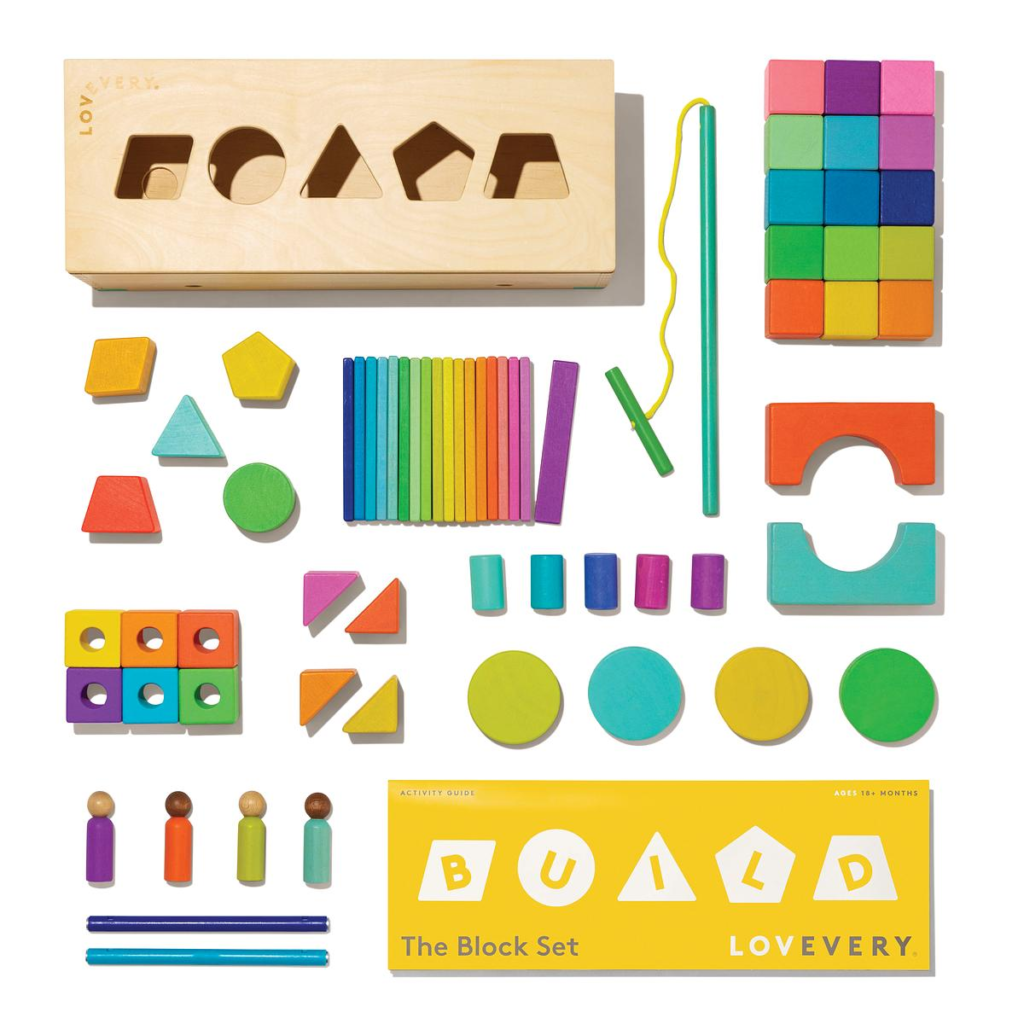One day, Lovevery co-founder/CEO Jessica Rolph was watching her baby play with a purple plastic cow with flashing lights, when a question popped into her head: Why do toys like this exist and what do they do for development?
“I felt pretty confident about how my baby’s food was helping his body grow, but I wasn’t so sure about how his toys were helping his brain grow,” Rolph said.
A short time later in 2017, Rolph and her co-founder, Roderick Morris, developed Lovevery’s first product, the Play Gym.
Today, Lovevery’s holistic early learning program includes dozens of products across its line of play kits and other standalone items. The company currently has over 270,000 active subscribers in more than 30 markets worldwide.
Science Fueling Inspiration
The original research that inspired the product line was Dr. William Staso’s thesis, Current Research Findings on the Neurological Development of Infants. Rolph used Stetos’ research as a foundation for her prototype line of cognitively stimulating children’s play kits. After a few more years of research and development. Lovevery was ready to hit the shelves in the national marketplace.
Today, the process of creating a new product starts with a team meeting and speaking with parents to understand their unique needs and what Lovevery could be doing (and others may not be) to solve developmental problems their child may be experiencing. Then, they test and refine multiple prototypes and conduct play studies with families across the country to get real-world feedback.
To inform its products, Lovevery works with a range of practitioners and researchers in the fields of education, neuroscience (including experts in early STEM and math learning), speech and language pathology, occupational and physical therapy, psychology and more.
What Do the Data Say?
Ninety percent of the human brain is developed by age five. Throughout the first few years of early life, predictable developmental windows are constantly opening and closing. Taking a stage-based approach means parents can tap into exactly what their baby is craving to learn at any given moment.
After years of well-established child development research, scientists have found play directly benefits fine and gross motor skills, social-emotional learning, cognitive skills, language development, executive functioning, creativity and self-esteem.
Products
Lovevery’s products and books are tailored to each stage of a child’s development.
The program introduces new skills during the specific window when a child is ready to start learning them. As a child moves through the program, each new toy and activity encourages them to go deeper into the skill.

This progression can be seen in the example of containment. Their learning starts with the “pots and pans” phase of dumping and filling containers and learning what volume does and doesn’t spill. This then evolves to transporting things around the house, and eventually to storing and collecting small objects.
Play Kits introduce containment with the Nesting Stacking Dripdrop Cups and the Ball Drop Box, where the ball is contained but not visible for an instant. This then progresses with the Clear Plastic Tube in the Explorer play kit, which gives a baby a much richer, deeper understanding of containment by watching various objects drop and pull through the tube.
Next is the Sliding Top Box, which teaches that something can be there even when it can’t be seen — a concept known as object permanence. Things get more advanced with The Babbler Play Kit by practicing putting smaller and smaller items through different sized holes using the Carrot Lid with Carrots for Coin Bank. After that, toddler’s can master their containment skills by learning to fill different-sized containers with water using the Liquid Lab.
The Future of Lovevery
Lovevery plans to add more years to its subscription Play Kits program in the near future. It is also heavily invested in expanding its content offering, including its stage-based books and parent learning resources across The Lovevery App and e-courses.











